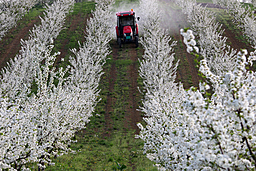SDHI Fungicides Containing 1-Aminonorbornanes
TECHNOLOGY NUMBER: 2018-470

OVERVIEW
Novel succinate dehydrogenase inhibitors (SDHIs) with demonstrated greenhouse activity- Demonstrated greenhouse and in vitro fungal control
- May be used with preventative or curative intent
BACKGROUND
Fungicides are critical to the protection of agricultural crops from the damaging effects of pathogenic fungi and fungal spores that threaten to reduce crop yield and quality. Fungicides are used primarily to protect plants from fungal pathogens that cause diseases such as rusts, mildews, blights, and rots. By controlling these diseases, fungicides help to secure crop yields, protect food quality, and improve the economic stability of farming operations. The importance of this protection is critical to the agricultural economy, with fungicides accounting for more than twenty-two percent of the entire global pesticide market. As resistance issues continue to rise, persistent fungal pathogens will elicit increasingly intense disease pressures that can only be successfully combatted through continuous agrochemical innovation.
INNOVATION
University of Michigan researchers have recently developed novel photochemical transformations that have enabled the preparation of previously-inaccessible synthetic SDHIs. These structurally-unique SDHIs have been shown to control multiple commercially-relevant fungal pathogens in both in vitro and greenhouse trials. Evaluating against the wheat and barley head blight pathogen (Fusarium graminearum) on a commercial spring wheat varietal, the top compounds elicited complete control (no detectable disease) when dosed just above field application rates for marketed SDHIs. Importantly, this activity was observed in both a preventative and curative capacity.